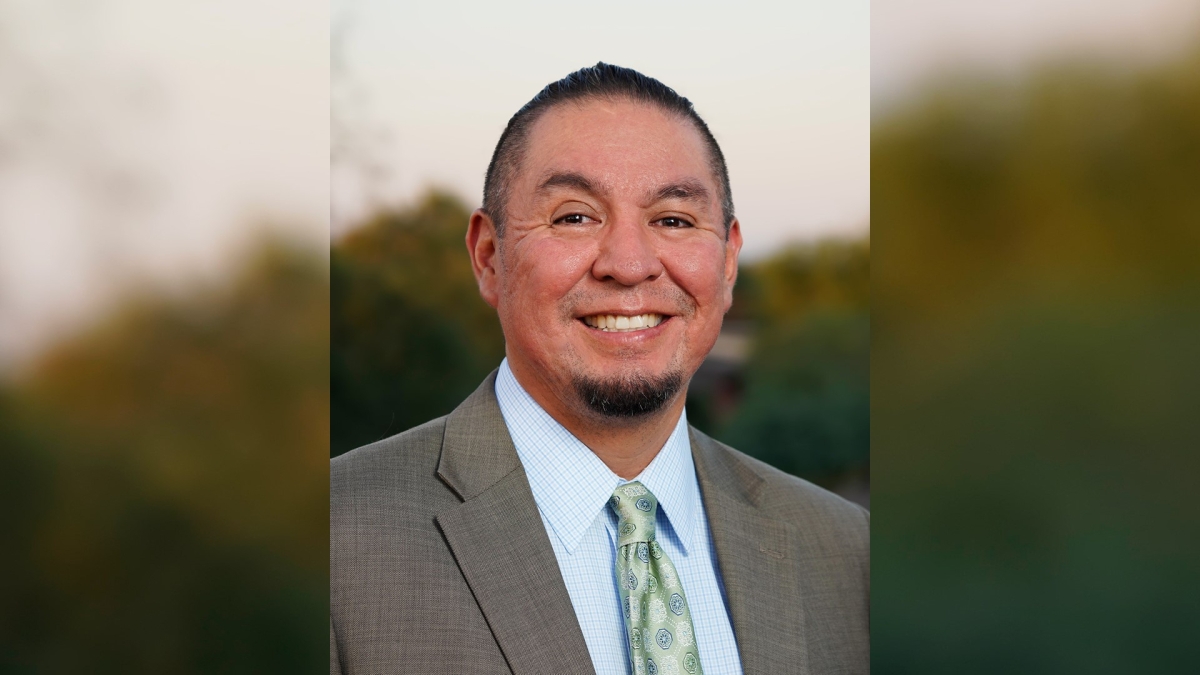ASU Law appoints alum to lead Indian gaming and tribal self-governance programs

ASU Law welcomes back alum Derrick Beetso to serve as the new director of its Indian gaming and tribal self-governance programs.
Derrick Beetso, a 2010 alumnus of the Sandra Day O’Connor College of Law at Arizona State University, has been named to take the helm of the college’s Indian gaming and tribal self-governance programs.
Beetso, a citizen of the Navajo Nation, earned his JD and certificate in Indian law as part of ASU Law’s nationally recognized Indian Legal Program. As director of the Indian gaming and tribal self-governance programs, he builds on the earlier leadership and work of ASU Law professors Lawrence Roberts and Ann Marie Bledsoe Downes, who helped launch the programs in 2019. Both recently went on leave from the college to serve in President Joe Biden’s administration.
Prior to joining ASU Law, Beetso served as the general counsel for the National Congress of American Indians, the first and only Native person to ever serve in this capacity for the organization. While there, he handled in-house legal needs and co-managed the Tribal Supreme Court Project with the Native American Rights Fund.
Beetso also served as an attorney-adviser within the Office of the Solicitor’s Phoenix Field Office, where he provided legal services for the Western Region of the Bureau of Indian Affairs and the San Carlos Irrigation Project. Previously, he served as counselor to Assistant Secretary-Indian Affairs Kevin Washburn during President Barack Obama’s administration.
With his experience in Washington, D.C., and ASU Law’s growing presence there, Beetso will help to expand educational and career opportunities for Indian Legal Program students in the nation’s capital.
He will teach one of the program’s popular traveling classes this fall, allowing ASU Law students to study on the Washington, D.C., campus. The class, Federal Advocacy for the Tribal Client, is a unique experience that introduces students to decisionmakers and facilitates networking with future employers, while providing students time to explore opportunities in the city.
“We are excited to welcome one of our distinguished alums back to campus,” said Patty Ferguson Bohnee, faculty director for the Indian Legal Program and director of the Indian Legal Clinic. “Derrick Beetso has a deep understanding of Indian Affairs and has committed his career to advancing the rights of tribal nations. His experience working for tribes and the government, as well as his success in developing effective partnerships make him a perfect fit for our ILP team.”
Beetso said he is honored to return to ASU Law as faculty.
“The great work the ILP has done since its inception at ASU Law has furthered the life goals of so many talented Native and non-Native professionals and has helped ensure tribal nations receive excellent representation in the legal field,” he said. “I am humbled to be able to share my experience, and I look forward to contributing to the ILP’s mission as best I can.”
The first of their kind in the nation, the Indian gaming and tribal self-governance programs were established thanks to an initial contribution generously given by the San Manuel Band of Mission Indians to further ASU Law’s commitment to serving the educational needs of tribal nations. With the Indian gaming emphasis, ASU Law is providing in-depth courses for students on the regulation, compliance and implementation of Indian gaming. ASU Law’s Master of Legal Studies (MLS) degree will equip professionals with the essential legal components of Indian gaming to excel in careers that intersect with Indian gaming.
Similarly, the self-governance emphasis is designed to educate students, whether they desire to work for tribes, the federal government or states, in really understanding the legal framework of the tribal-federal relationship, the federal programs and statutes that promote tribal self-governance and the implementation of that legal framework.
The support from the San Manuel Band of Mission Indians will help increase educational opportunities in the field of Indian law and the expansion of work experiences for students interested in Indian law, and it will continue to contribute to the development of Indian law trainings for Indian tribes and organizations. To learn more about contributing to the programs, contact Hallie.Rexer@asu.edu.
More Law, journalism and politics

Veteran journalists Jorge Ramos and Marty Baron talk democracy and free press
Arizona State University hosted "Truth Across Borders," a bilingual panel featuring two of America’s most iconic journalists,…
Can elections results be counted quickly yet reliably?
Election results that are released as quickly as the public demands but are reliable enough to earn wide acceptance may not…
Spring break trip to Hawaiʻi provides insight into Indigenous law
A group of Arizona State University law students spent a week in Hawaiʻi for spring break. And while they did take in some of the…

